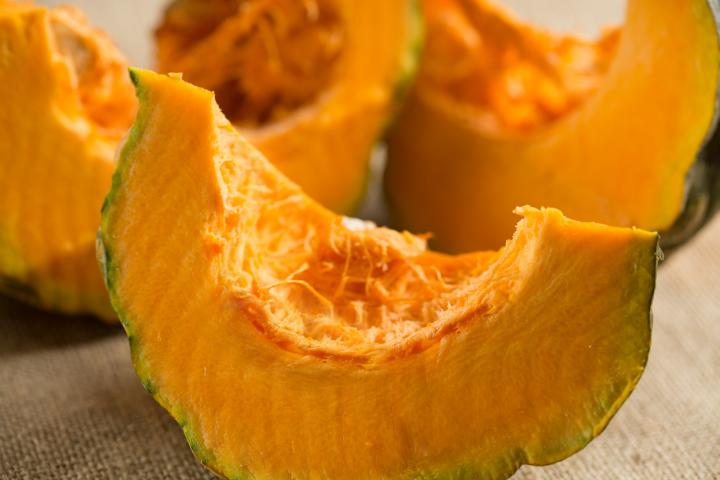Primary Image

Easy Ways to Bake, Roast, and Purée Pumpkin
i cooked my pumpkin yesterday at 350.
large decorative one with 1/2 pulp down on parchment in a jelly roll pan and 1/2 pulp up covered with alum foil in my 9 by 13 pan. much water--make sure you have a rimmed sheet if baking pulp down or it could run all over the oven. i was croaking just lifting it out and hoping it wouldn't bump and spill all over. next time i will do smaller pieces or use a higher sided pan.
the upright half just collected it in the pumpkin.
After doing all this, which I intend to do with the small pumpkins, is it ok to feed the leftover rinds to the chickens?
Trying to make things easy here…..
After removing seeds and baking in oven for about 1 hour (and cooling period), take each half and slice them like you would a cantaloupe….more manageable pieces. Now you can take each SMALLER slice and cut the pulp right down to the rind….much, much easier than trying to scrape each larger half. After slicing each smaller section, cut up into 1”- 2” pieces and toss into your blender/food processor to purée. Once the purée is ready, measure out two (2) cups into a FREEZER ZIP LOCK BAG. Then toss them in your freezer. This is about the right quantity for pies, breads, muffins, etc…
Seriously you couldn't include Celsius?
Seriously, u can't ask google? 😋
Hi Harry-
Thanks for your feedback! I have updated the article to include Celsius information as well. You can also always refer to our Temperature Conversion Calculator.
Hi,
Another way I cooked pumpkins is by boiling them. It seems quicker, but you need to drain well or the pie comes out with too much moisture.
Each has it own flavor. My wife likes boiled pumpkins for her pies while I think baked gives the pie a more robust flavor.
I use my grill cut side down check on them every 15 to 20 min.
I love any squash . This year I tried a small pie pumpkin in my air fryer. 24 minutes and done . Made my bread and loved it . Happy Fall everyone
This is my second year of growing Jack o Lantern. I have an old carpet on top of my compost bin that is still maturing. I start a pumpkin seed indoors in a large pot with holes in the bottom. Once the frost has passed I sink the pot through the hole in the carpet with the rim just above the carpet. The compost provides warmth, nutrients, and moisture for the whole season. Only very occasionally do I have to water it. The carpet keeps the fruit off the soil.
- « Previous
- 1
- 2
- …
- 10
- Next »











Comments